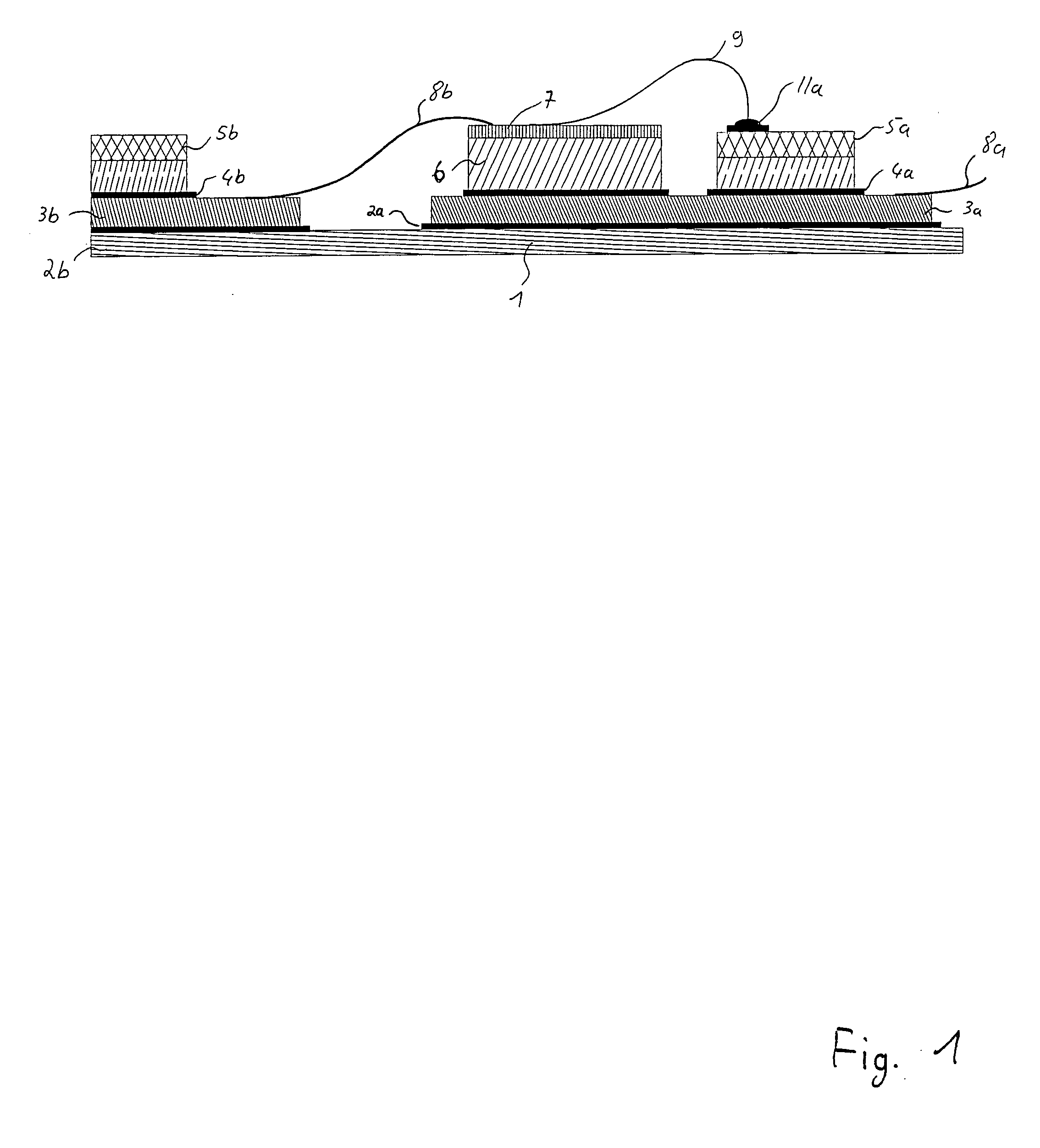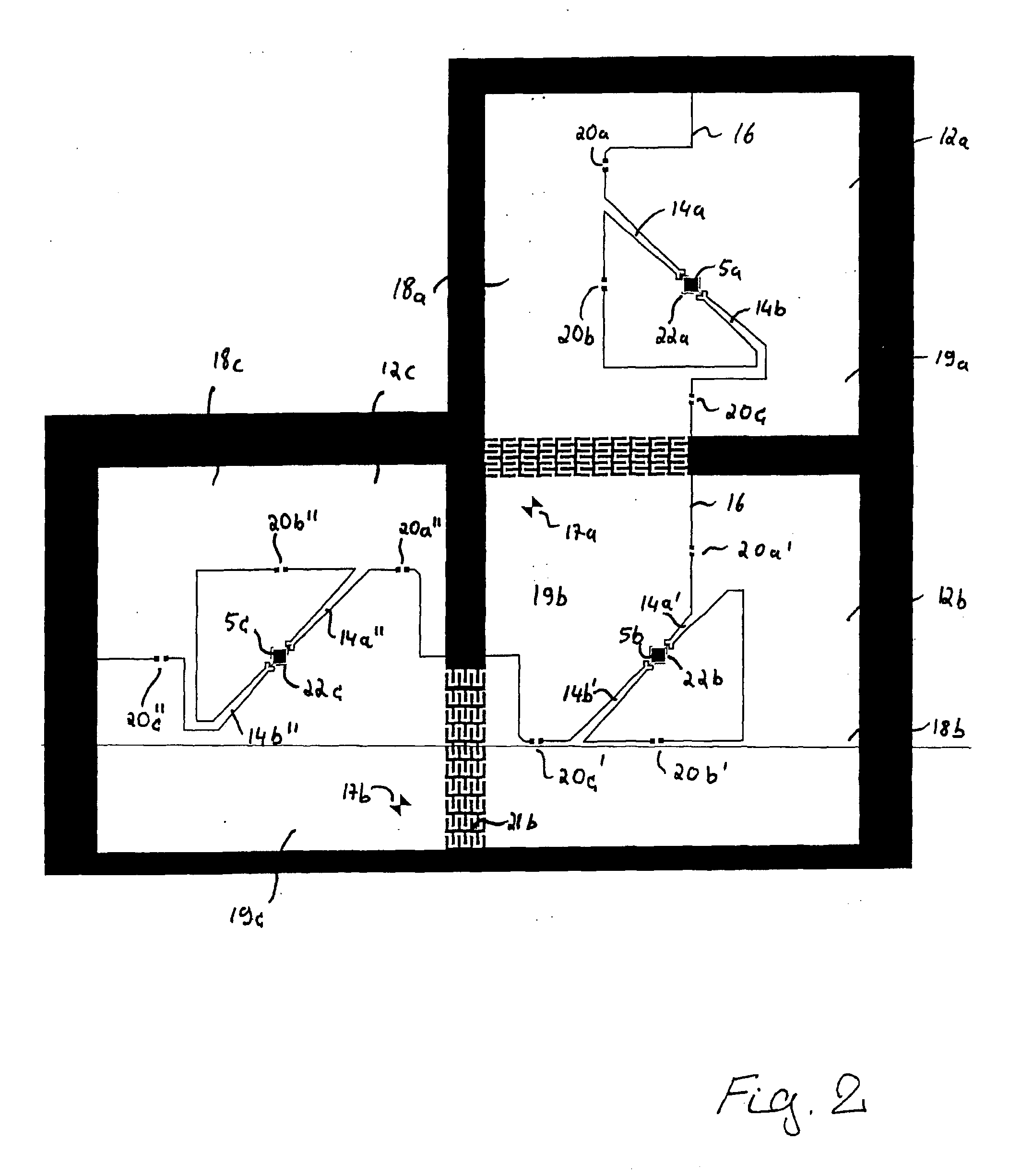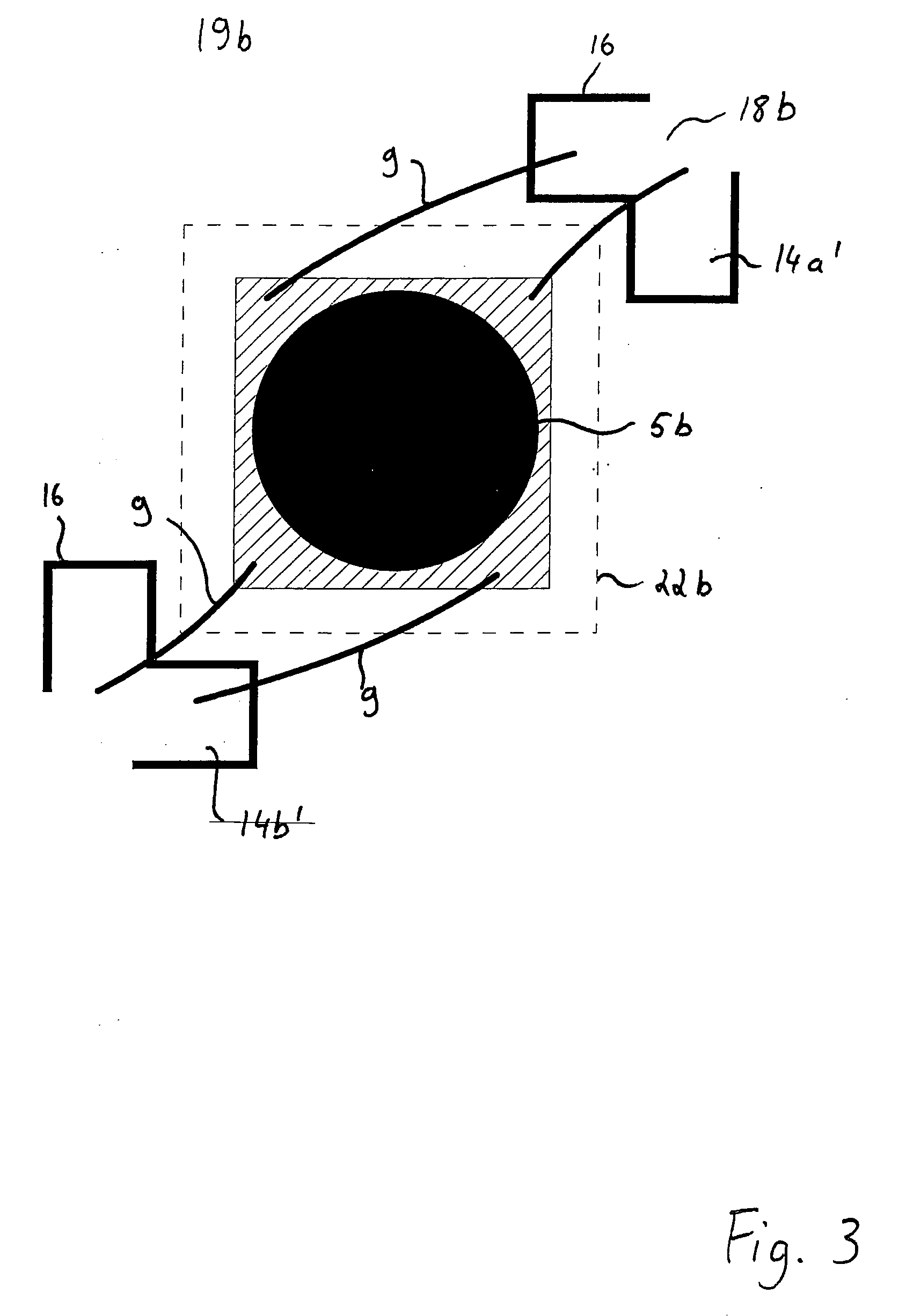Solar Cell Module and Method For Its Production
a solar cell and module technology, applied in the field of solar cell modules, can solve the problems of high cost, large number of individual parts, and often unsuitable methods, and achieve the effect of reasonable and cheap production and excellent heat dissipation
- Summary
- Abstract
- Description
- Claims
- Application Information
AI Technical Summary
Benefits of technology
Problems solved by technology
Method used
Image
Examples
Embodiment Construction
[0031]FIG. 2 shows a section of a solar module according to the present invention. The present invention concerns solar cell modules for concentrating solar systems. The sunlight is hereby focused with the help of an optics on a tiny focal spot in which then only one small solar cell is situated. The solar cell modules according to the invention now consist of a planar, two-dimensional array comprising corresponding concentrator optics which produce a two-dimensional array of focal spots. A solar cell is now disposed in each focal spot. This has the advantage that highly efficient solar cells can be used in the concentrating solar technology. Hence an array of Fresnel lenses is used for example in so-called Flatcon™ technology, said lenses concentrating the sunlight by a factor of 300 to 1,000 and focusing on a small focal spot. In each focal spot of each individual Fresnel lens there is then situated a 1 to 10 mm2 small solar cell. Hence overall expensive semiconductor surface of h...
PUM
 Login to View More
Login to View More Abstract
Description
Claims
Application Information
 Login to View More
Login to View More - R&D
- Intellectual Property
- Life Sciences
- Materials
- Tech Scout
- Unparalleled Data Quality
- Higher Quality Content
- 60% Fewer Hallucinations
Browse by: Latest US Patents, China's latest patents, Technical Efficacy Thesaurus, Application Domain, Technology Topic, Popular Technical Reports.
© 2025 PatSnap. All rights reserved.Legal|Privacy policy|Modern Slavery Act Transparency Statement|Sitemap|About US| Contact US: help@patsnap.com



